NEWSLETTER 03/2011 07. March 2011
Visit:
www.shark-references in
facebook 
and the group “Shark Research” in
ResearchGate 
NEW PARTNERS:
Jones Santander-Neto, Universidade Federal Rural de Pernambuco, Laboratório de Dinâmica de Populações Marinhas, Recife, Brazil
Joseph J. Bizzarro, University of Washington, School of Aquatic and Fishery Sciences, Seattle, USA
David A. Ebert, Pacific Shark Research Center, Moss Landing Marine Laboratories, Moss Landing, USA (Homepage)
Prof. Dr. Nathan Hart, Neuroecology Group (M317), School of Animal Biology and The Oceans Institute, University of Western Australia
Dr. Susan Theiss, School of Geography, Planning and Environmental Management, The University of Queensland, St. Lucia, Brisbane, Australia
Partner in Google-Maps
STATISTIC:
|
Dezember
|
Januar
|
Februar
|
March
|
|
papers:
|
11.729
|
11.849
|
12.034
|
12.130
|
|
recent:
|
9.004
|
9.111
|
9.283
|
9.371
|
|
fossil:
|
2.725
|
2.738
|
2.751
|
2.759
|
|
evaluated:
|
6.124
|
6.351
|
6.583
|
6.791
|
|
free downloading:
|
1.948
|
2.006
|
2.106
|
2.160
|
|
saved abstracts:
|
2.124
|
2.337
|
2.498
|
2.545
|
|
saved DOI
|
1.754
|
1.863
|
1.976
|
2.006
|
|
database entries „described species“
|
33.207
|
34.172
|
35.248
|
35.526
|
|
different species names
|
10.456
|
10.530
|
10.590
|
10.614
|
|
valid recent species
|
1.180
|
1.180
|
1.180
|
1.183
|
MEETINGS:
MEETINGS:
-------------------------------------------------------------------------------------------------------------
 |
 |
|
|
|
Special symposium „Securing Shark Conservation“ at the International Marine Conservation Congress, Victoria, British Columbia, Canada.
|
|
-------------------------------------------------------------------------------------------------------------
35th Annual Larval Fish Conference




May 22-26, 2011
Wilmington
North Carolina
Meeting Web Site
-------------------------------------------------------------------------------------------------------------
 |
 |
|
|
|
Annual meeting of the ICES Working Group on Elasmobranch Fishes (WGEF)
|
|
27th Annual Meeting of the American Elasmobranch Society

July 6-11, 2011
Minneapolis
Minnesota
-------------------------------------------------------------------------------------------------------------
 |
 |
|
|
The symposium takes place at the 2011 American Fisheries Society 141st Annual Meeting in Seattle, Washington, USA. table.
|
|
-------------------------------------------------------------------------------------------------------------

SVP 71st Annual Meeting
November 2-5, 2011
Paris Las Vegas
Las Vegas, NV USA
-------------------------------------------------------------------------------------------------------------
15th EEA Conference October or November 2011 in Berlin, Germany
-------------------------------------------------------------------------------------------------------------
NEW FUNCTION OF THE WEBSITE:
NEW! List (pdf) of the papers of the year 2010 for download:
The downloadlink of the pdf is: http://www.shark-references.com/images/meine_bilder/downloads/Papers_2010.pdf
List (pdf) of the papers of the year 2009 for download:
The downloadlink of the pdf is: http://www.shark-references.com/images/meine_bilder/downloads/Papers_2009.pdf
New: first description (digital version) of the following species/genus:
Example images: 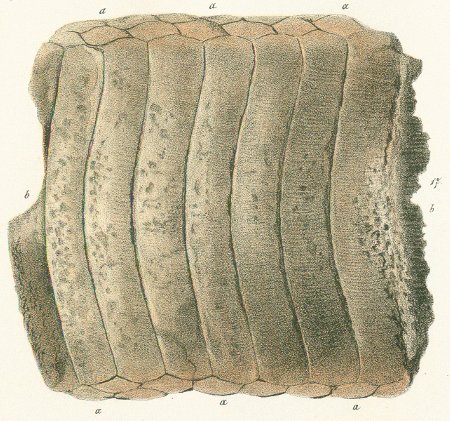
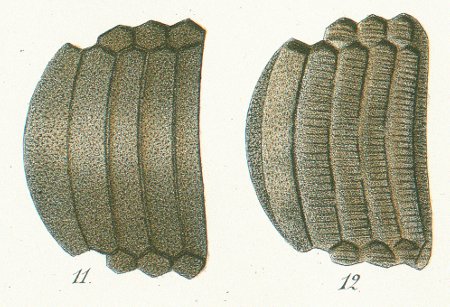
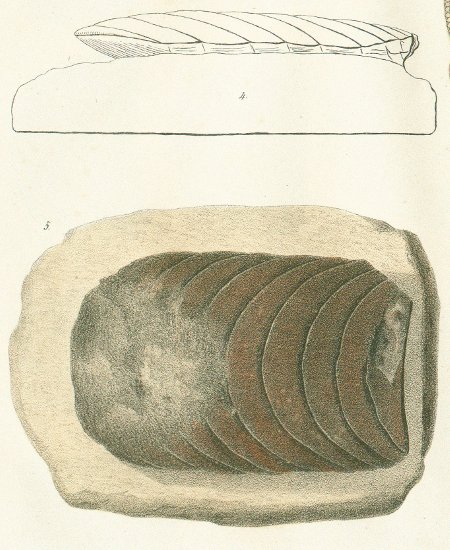
1. DU GENRE MYLIOBATES Dum.
I. MYLIOBATES MICROPTEURUS Agass.
II. MYLIOBATES STOKESII Agass.
III. MYLIOBATES GONIOPLEURUS Agass.
IV. MYLIOBATES DIXONI Agass.
V. MYLIOBATES REGLEY Agass.
VI. MYLIOBATES STRIATUS Agass.
VII. MYLIOBATES TOLIAPICUS Agass.
VIII. MYLIOBATES PUNCTATUS Agass.
IX. MYLIOBATES SATURALIS Agass.
X. MYLIOBATES GYRATUS Agass.
XI. MYLIOBATES HETEROPLEURUS Agass.
XII. MYLIOBATES JUGALIS Agass.
XIII. MYLIOBATES BRONGNIARTI Agass.
XIV. MYLIOBATES NITIDUS Agass.
2. DU GENRE AETOBATIS M. ET H.
I. AETOBATIS SULCATUS Agass.
II. AETOBATIS IRREGULARIS Agass.
III. AETOBATIS ARCUATUS Agass.
New: now 1.183 Species descriptions on www.shark-references.com
Navigation: menue – Species Descriptions – select family - select genus – select species or
menue – List of species – Extant valid species – name of the species – symbol “SR”
please support this sites and send your images (e.g.: images of species, teeth, fins, morphological characteristics. ... : juergen.pollerspoeck@shark-references.com
direct link to sharks
direct link to skates
direct linc to chimaeras
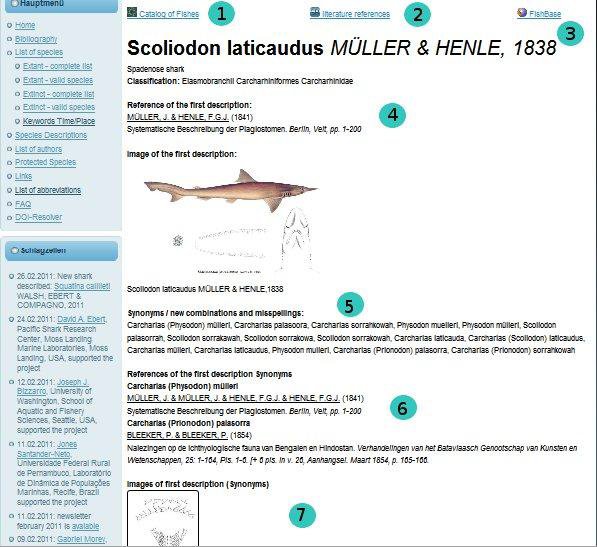
1.) PopUp: Text of Catalog of fishes, Eschmeyer, W. N. & Fricke, R. (eds.) Catalog of Fishes electronic version (December 2010). http://research.calacademy.org/ichthyology/catalog/fishcatmain.asp
2.) Link: List of references
3.) Link: species on www.fishbase.org
4.) Reference of the first description with information about the image of the first description (image in copyright, no image or image)
5.) Synonyms (source: www.shark-references.com)
6.) References of the first description –synonyms-
7.) Image of the first description –synonyms- (only images out of copyright)

8.) Information about types (described species and synonyms)
Type, Collection (PopUp: more information, e.g.: address, name, contact information…) and number (PopUp: more information, e.g.: sex, length, …)
9.) Short species information (source: www.fishbase.org)
images: please send your image of the species: juergen.pollerspoeck@shark-references.com
Request for Information about Pacific Shark Tagging Activities

Dear All,
We are writing to you in connection with the Shark Research Plan currently being implemented by the Secretariat of the Pacific Community (SPC) on behalf of the Western and Central Pacific Fisheries Commission (WCPFC). The Shark Research Plan is designed to gather all relevant fisheries and biological information about key shark species in the Western and Central Pacific Ocean and to support shark stock assessments and inform future discussion of management measures. For more information about the Shark Research Plan please refer to http://www.wcpfc.int/node/2950 and http://www.wcpfc.int/doc/wcpfc7-2010-16/spc-progress-toward-shark-assessments.
One of our new initiatives under the Shark Research Plan is the Shark Tagging Metadatabase Project. This project is designed to identify sources of biological information for highly migratory shark species through gathering and storing of information about shark tagging. Our aim is not to compile actual tag tracking data, but rather to compile metadata such as the numbers of species and tags attached and recovered, the study area and the type of tag. These metadata will be stored in a database and made freely available online at the conclusion of the project through the SPC website. As these data may be useful in identifying new information for our ongoing stock assessments, we need to work quickly to gather and understand what shark tag may be available and produce the database by the end of June 2011. At the same time, we also hope this metadatabase can assist those who recover tagged sharks or unattached tags to return them to the researchers who attached them. In the longer term, we hope that the database can inform researchers about the existence of similar tagging programmes in other parts of the Pacific and identify data gaps for various species and areas.

downloadlink of the excel-file
We would like to request your assistance in providing some information about tags attached to sharks in the Pacific by you or your colleagues. A suggested list of data fields is provided in the attached spreadsheet. Please feel free to modify these fields to reflect the available data, or to add new fields if necessary. If you do not hold any shark tagging information but can refer us to other researchers who may, we would greatly appreciate hearing from you.
This project is being coordinated at SPC by Ms Lea Protoy so please contact her if you have any questions or require further information. We would be happy to assist you in whatever way we can in finding ways to receive your metadata without taking up large amounts of your time (e.g. linkages to existing web databases). Thank you in advance for your consideration and we look forward to hearing from you!
Best wishes,
Shelley Clarke and Lea Protoy
Shelley Clarke Lea Protoy
Shark Assessment Scientist Shark Assessment Research Assistant
Oceanic Fisheries Programme Oceanic Fisheries Programme
Secretariat of the Pacific Community Secretariat of the Pacific Community
BPD5 CEDEX BPD5 CEDEX
Noumea, New Caledonia 98848 Noumea, New Caledonia 98848
Tel: +687 262000 xt 31328 leap@spc.int
shelleyc@spc.int
--------------------------------------------------------------------------------------------------------------------------------
NEW PAPERS:
FOSSIL:
DE SCHUTTER, P. (2011): Carcharias vorax (Le Hon, 1871) (Chondrichthyes, Lamniformes), from the Miocene of Belgium: redescription and designation of a neotype and paraneotype. Geologica Belgica, 14 (3-4): 175-192
RECENT:
AFONSO, A.S. & HAZIN, F.H.V. & CARVALHO, F. & PACHECO, J.C. & HAZIN, H. & KERSTETTER, D.W. & MURIE, D. & BURGESS, G.H. (2011): Fishing gear modifications to reduce elasmobranch mortality in pelagic and bottom longline fisheries off Northeast Brazil. Fisheries Research, In Press, Corrected Proof
Abstract:
Abstract: http://dx.doi.org/10.1016/j.fishres.2011.01.007
AKHILESH, K.V. & BINEESH, K.K. & SHANIS, C.P.R. & HUMAN, B.A. & GANGA, U. (2011): Rediscovery and description of the quagga shark, Halaelurus quagga (Alcock, 1899) (Chondrichthyes: Scyliorhinidae) from the southwest coast of India. Zootaxa, 2781: 40-48
ANDERSON, R.C. & ADAM, M.S. & GOES, J.I. (2011): From monsoons to mantas: seasonal distribution of Manta alfredi in the Maldives. Fisheries Oceanography, 20 (2): 104-113
Abstract: http://dx.doi.org/10.1111/j.1365-2419.2011.00571.x
ANDERSON, R.C. & ADAM, M.S. & KITCHEN-WHEELER, A.-M. & STEVENS, G. (2011): Extent and Economic Value of Manta Ray Watching in Maldives. Tourism in Marine Environments, 7 (1): 15-27
Abstract: http://dx.doi.org/10.3727/154427310X12826772784793
CAMPANA, S.E. & DOREY, A. & FOWLER, M. & JOYCE, W. & WANG, Z. & WRIGHT, D. & YASHAYAEV, I. (2011): Migration Pathways, Behavioural Thermoregulation and Overwintering Grounds of Blue Sharks in the Northwest Atlantic. PLoS ONE, 6 (2): e16854
Abstract: http://dx.doi.org/10.1371/journal.pone.0016854
CARTAMIL, D. & SANTANA-MORALES, O. & ESCOBEDO-OLVERA, M. & KACEV, D. & CASTILLO-GENIZ, L. & GRAHAM, J.B. & RUBIN, R.D. & SOSA-NISHIZAKI, O. (2011): The artisanal elasmobranch fishery of the Pacific coast of Baja California, Mexico. Fisheries Research, In Press, Corrected Proof
Abstract: http://dx.doi.org/10.1016/j.fishres.2011.01.020
CARVALHO, F.C. & MURIE, D.J. & HAZIN, F.H.V. & HAZIN, H.G. & LEITE-MOURATO, B. & TRAVASSOS, P. & BURGESS, G.H. (2011): Catch rates and size composition of blue sharks (Prionace glauca) caught by the Brazilian pelagic longline fleet in the southwestern Atlantic Ocean. Aquatic Living Resources, 23: 373-385
Abstract: http://dx.doi.org/10.1051/alr/2011005
DE CARVALHO, M.R. & LOVEJOY, N.R. (2011): Morphology and phylogenetic relationships of a remarkable new genus and two new species of Neotropical freshwater stingrays from the Amazon basin (Chondrichthyes: Potamotrygonidae). Zootaxa, 2776: 13-48
HAMMERSCHLAG, N. & GALLAGHER, A.J. & LAZARRE, D.M. (2011): A review of shark satellite tagging studies. Journal of Experimental Marine Biology and Ecology, 398 (1-2): 1-8
Abstract: http://dx.doi.org/10.1016/j.jembe.2010.12.012
HAMMERSCHLAG. N. & GALLAGHER, A.J. & LAZARRE, D.M. & SLONIM, C. (2011): Range extension of the Endangered great hammerhead shark Sphyrna mokarran in the Northwest Atlantic: preliminary data and significance for conservation. Endangered Species Research, 13 (2): 111-116
Abstract: http://dx.doi.org/10.3354/esr00332
HART, N.S. & THEISS, S.M. & HARAHUSH, B.K. & COLLIN, S.P. (2011): Microspectrophotometric evidence for cone monochromacy in sharks. Naturwissenschaften, 98 (3): 193-201
Abstract: http://dx.doi.org/10.1007/s00114-010-0758-8
KEMPSTER, R.M. & COLLIN, S.P. (2011): Electrosensory pore distribution and feeding in the megamouth shark Megachasma pelagios (Lamniformes: Megachasmidae). Aquatic Biology, 11: 225-228
Abstract: http://dx.doi.org/10.3354/ab00311
MAIN, C.E. & COLLINS, M.A. (2011): Diet of the Antarctic starry skate Amblyraja georgiana (Rajidae, Chondrichthyes) at South Georgia (Southern Ocean). Polar Biology, 34 (3): 389-396
Abstract: http://dx.doi.org/10.1007/s00300-010-0894-9
NOCK, T.G. & CHAND, D. & LOVEJOY, D.A. (2011): Identification of members of the gonadotropin-releasing hormone (GnRH), corticotropin-releasing factor (CRF) families in the genome of the holocephalan, Callorhinchus milii (elephant shark). General and Comparative Endocrinology, In Press, Accepted Manuscript
Abstract: http://dx.doi.org/10.1016/j.ygcen.2011.02.001
ORLOV, A.M. & KULISH, E.F. & MUKHAMETOV, I.N. & SHUBIN, O.A. (2011): Age and growth of spiny dogfish Squalus acanthias (Squalidae, Chondrichthyes) in pacific waters off the Kuril Islands. Journal of Ichthyology, 51 (1): 42-55
Abstract: http://dx.doi.org/10.1134/S0032945210061049
PAPASTAMATIOU, Y.P. & CARTAMIL, D.P. & LOWE, C.G. & MEYER, C.G. & WETHERBEE, B.M. & HOLLAND, K.N. (2011): Scales of orientation, directed walks and movement path structure in sharks. Journal of Animal Ecology, in press
Abstract: http://dx.doi.org/10.1111/j.1365-2656.2011.01815.x
QUIROZ, J.C. & RODRIGO WIFF & CUBILLOS, L.A. & BARRIENTOS, M.A. (2011): Vulnerability to exploitation of the yellownose skate (Dipturus chilensis) off southern Chile. Fisheries Research, In Press, Accepted Manuscript
Abstract: http://dx.doi.org/10.1016/j.fishres.2011.01.006
RIVERA-VICENTE, A.C. & SEWELL, J. & TRICAS, T.C. (2011): Electrosensitive Spatial Vectors in Elasmobranch Fishes: Implications for Source Localization. PLoS ONE, 6: e16008
Abstract: http://dx.doi.org/10.1371/journal.pone.0016008
ROBBINS, W.D. & PEDDEMORS, V.M. & KENNELLY, S.J. (2011): Assessment of permanent magnets and electropositive metals to reduce the line-based capture of Galapagos sharks, Carcharhinus galapagensis. Fisheries Research, In Press, Accepted Manuscript
Abstract: http://dx.doi.org/10.1016/j.fishres.2011.01.023
ROHNER, C.A. & RICHARDSON, A.J. & MARSHALL, A.D. & WEEKS, S.J. & PIERCE, S.J. (2011): How large is the world's largest fish? Measuring whale sharks Rhincodon typus with laser photogrammetry. Journal of Fish Biology, 78 (1): 378-385
Abstract: http://dx.doi.org/10.1111/j.1095-8649.2010.02861.x
STORAI, T. & ZINZULA, L. & REPETTO, S. & ZUFFA, M. & MORGAN, A. & MANDELMAN, J. (2011): Bycatch of Large Elasmobranchs in the Traditional Tuna Traps (Tonnare) of Sardinia from 1990 to 2009. Fisheries Research, In Press, Accepted Manuscript
Abstract: http://dx.doi.org/10.1016/j.fishres.2011.01.018
VÄSTERMARK, Å. & SCHIÖTH, H.B. (2011): The early origin of melanocortin receptors, agouti-related peptide, agouti signalling peptide, and melanocortin receptor-accessory proteins, with emphasis on pufferfishes, elephant shark, lampreys, and amphioxus. European Journal of Pharmacology, In Press, Corrected Proof
Abstract: http://dx.doi.org/10.1016/j.ejphar.2010.10.106
VERÍSSIMO, A. & MCDOWELL, J.R. & GRAVES, J.E. (2011): Population structure of a deep-water squaloid shark, the Portuguese dogfish (Centroscymnus coelolepis). ICES Journal of Marine Science, 68 (3): 555-563
Abstract: http://dx.doi.org/10.1093/icesjms/fsr003
WALSH, J.H. & EBERT, D.A. & COMPAGNO, L.J.V. (2011): Squatina caillieti sp. nov., a new species of angel shark (Chondrichthyes: Squatiniformes: Squatinidae) from the Philippine Islands. Zootaxa, 2759: 49-59
MISCELLANEOUS
New to nature No 31: Chlamydoselachus africana
This is the first species of frilled shark discovered since 1884
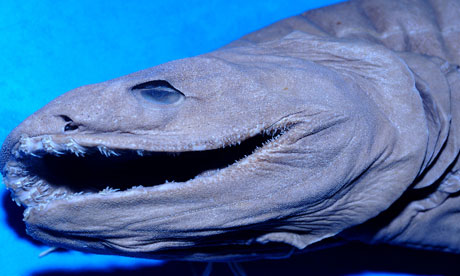
Chlamydoselachus africana, found off the coast of Namibia
Chlamydoselachus africana is the second known species of the shark family Chlamydoselachidae.
Caught off the coast of Namibia, this newly discovered shark appears to feed on smaller sharks and squid. Its snakelike head and long, distensible jaws with multiple needle-like, inwardly directed spines on its teeth are capable of snagging prey as large as half its own body length.
The only other species of frilled shark, such as this is, was discovered in 1884 off the coast of Japan.
Whether this new shark is geographically widespread like its sister species is yet to be determined. Both species are known to inhabit only very deep waters, from 550m to around 900m.
Quentin Wheeler is director of the International Institute for Species Exploration, Arizona State Universit
-------------------------------------------------------------------------------------------------------------------------------------
ScienceDaily (Feb. 28, 2011) — A study led by scientists at the University of Miami (UM) Rosenstiel School of Marine & Atmospheric Science details the first scientific research to successfully track a great hammerhead shark using satellite tag technology.
Rosenstiel Schhol Research Assistant Professor Neil Hammershlag and colleagues tracked one of the nomadic sharks for 62 days to uncover its northeast journey from the coast of South Florida to the middle of the Atlantic off the coast of New Jersey. The straight line point-to-point distance of 1,200 kilometers (745 miles) represents a range extension for this species. The data also revealed the shark entering the Gulf Stream current and open-ocean waters of the northwestern Atlantic Ocean.
"This animal made an extraordinary large movement in a short amount of time," said Hammerschlag, director of the R.J. Dunlap Marine Conservation Program at the UM Rosenstiel School. "This single observation is a starting point, it shows we need to expand our efforts to learn more about them."
The animal was likely following food, such as mahi-mahi and jacks, off the continental slope and into the Gulf Stream, according to the authors.
This preliminary study is part of a larger effort by Hammerschlag to satellite track tropical sharks to identify hotspots -- areas that are important for feeding, mating, and pupping -- and to document their largely unknown migration routes. In the last year, the R.J. Dunlap team has tagged the fins more than 50 large and environmentally threatened sharks in Florida and Bahamas, among them great hammerhead, bull and tiger sharks.
The great hammerhead shark is listed as endangered in the northwest Atlantic and Gulf of Mexico by the International Union for Conservation of Nature (ICUN) due to a suspected population decline of nearly 50 percent over the last 10 years. The shark is found in tropical waters worldwide and is under threat of extinction due to overfishing for its large fins, which are prized for shark fin soup, and from accidental bycatch from commercial fishing operations.
"This study provides evidence that great hammerheads can migrate into international waters, where these sharks are vulnerable to illegal fishing," said Hammerschlag. "By knowing the areas where they are vulnerable to exploitation we can help generate information useful for conservation and management of this species."
DNA analysis of great hammerhead fins sold in the Asian shark fin market has shown that a large majority of the sharks came from Atlantic waters.
The paper was published in the current issue of the journal Endangered Species Research.
Journal Reference:
- N Hammerschlag, AJ Gallagher, DM Lazarre, C Slonim. Range extension of the Endangered great hammerhead shark Sphyrna mokarran in the Northwest Atlantic: preliminary data and significance for conservation. Endangered Species Research, 2011; 13 (2): 111 DOI: 10.3354/esr00332

























 Chlamydoselachus africana, found off the coast of Namibia
Chlamydoselachus africana, found off the coast of Namibia








